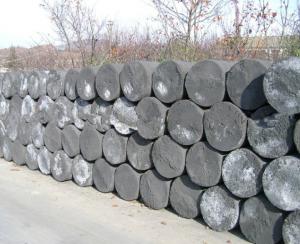When we talk about Carbon and Graphite Electrodes, we’re diving into a world of chemistry, physics, and a whole lot of practical applications. These two materials are often used interchangeably, but they have their distinct properties and uses that make them unique. Let’s explore the differences, similarities, and why you might choose one over the other in various scenarios.
Carbon, in its pure form, is a non-metallic element found in abundance on Earth. It’s known for its ability to form a vast array of compounds, which is why it’s a crucial component in many industries. Carbon electrodes are made from pure carbon, and they’re valued for their high electrical conductivity, chemical stability, and corrosion resistance. They’re also relatively inexpensive, making them a popular choice for many applications.
On the other hand, graphite is a crystalline form of carbon. It’s got a layered structure that gives it some pretty impressive properties. Graphite electrodes are known for their higher thermal conductivity, better mechanical strength, and lower electrical resistance compared to carbon electrodes. They’re also more resistant to oxidation, which makes them ideal for high-temperature applications.
But here’s the thing, graphite electrodes are more expensive than carbon electrodes. So, when cost is a concern, carbon might be the way to go. However, if you need something that can handle high temperatures and provide better mechanical strength, graphite is your go-to.
Let’s talk about the manufacturing process. Carbon electrodes are made through a process called calcination, where the carbon material is heated to high temperatures to remove impurities. This process enhances their electrical conductivity and makes them more suitable for electrical applications. Graphite electrodes, on the other hand, are produced through a more complex process involving crushing, grinding, and then heating the graphite material to even higher temperatures to achieve the desired properties.
Now, when it comes to applications, both carbon and graphite electrodes have their place. Carbon electrodes are widely used in the steel industry for electric arc furnaces, due to their ability to withstand high temperatures and electrical currents. They’re also used in the production of aluminum, where their corrosion resistance comes in handy.
Graphite electrodes, with their superior thermal and electrical properties, are used in more specialized applications. They’re commonly found in the production of silicon metal, where high temperatures and electrical currents are required. They’re also used in the manufacturing of various chemicals, where their resistance to oxidation is a significant advantage.
Maintenance is another aspect to consider. Carbon electrodes are easier to maintain due to their simpler structure, while graphite electrodes might require more attention due to their more complex composition. However, the longer lifespan of graphite electrodes often offsets the higher maintenance requirements.
In terms of environmental impact, both materials have their pros and cons. Carbon electrodes, being less resistant to oxidation, can lead to more emissions during their use. Graphite electrodes, while more resistant, have a higher production cost which can indirectly affect the environment due to increased energy consumption.
So, which one should you choose? It really depends on your specific needs. If you’re working on a project where cost is a significant factor, carbon electrodes might be the better option. But if you need something that can handle high temperatures, offer better mechanical strength, and has a longer lifespan, graphite electrodes are the way to go.
In conclusion, both carbon and graphite electrodes have their unique properties and applications. Understanding the differences between them and how they can be applied in various industries is crucial for making the right choice. Whether you’re in the steel industry, aluminum production, silicon metal manufacturing, or chemical production, knowing your materials will help you achieve the best results. So, the next time you’re faced with the decision between carbon and graphite electrodes, think about the specific requirements of your project and make an informed decision.

